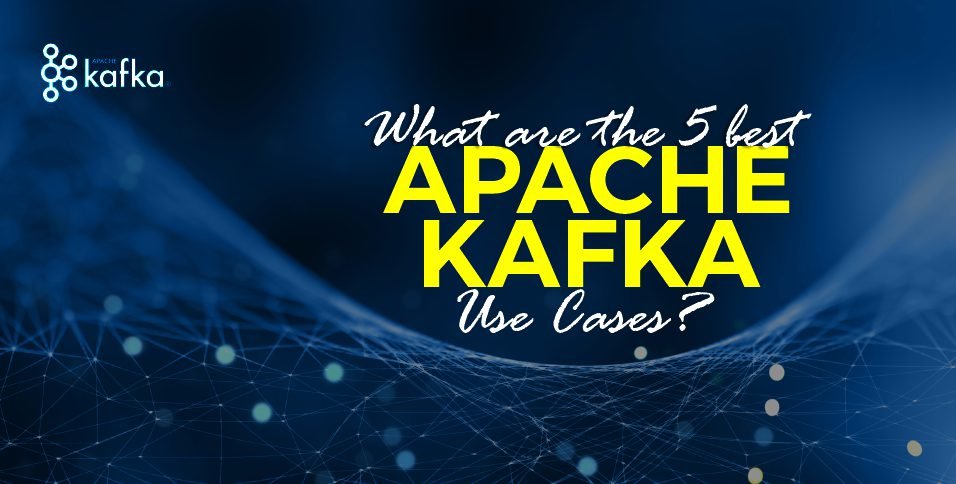The harnessing power of steaming event data lets companies monitor and act in response to interactions. So, what characteristics make Apache Kafka the most utilized tool to work with streaming data?
More than 75% of fortune Hundred Companies use Kafka – and here we will discuss the key aspects, components, and Apache Kafka use cases.
But first;
Apache Kafka – What is it?
It is an open-source streaming data platform – originally built by LinkedIn. However, with the expansion of Kafka’s holistic capabilities, it was donated to Apache for advanced development.
How does it work?
It operates much like a conventional publish-subscribe message queue enabling you to publish and subscribe to multiple streams of messages. Still, Kafka has three major differences from the conventional message queues, which are;
- It is a modern distributed system – as a cluster and scales up to work with multiple applications.
- Kafka is also designed to make-do like a storage system, storing data for as long as required. At the same time, other message queues tend to remove messages right after a consumer confirms the receipt.
- Kafka can handle stream processing, datasets, and derived streams dynamically instead of being only a transitory for the batches of messages.
Now as we know what Kafka is, how it works, and how it is different from message queues, let’s get into the main question here;
What is Kafka used for?
5 Apache Kafka Use Cases
This section of our article will discuss the common uses/applications for Apache Kafka.
1. Tracking
Activity tracking was what Kafka had been intended for – as LinkedIn wanted to restructure the activity tracking pipeline for its users – in the form of instantaneous publish and subscribe feeds.
Activity tracking is often high volume, as each user page view – generates multiple activity messages or events, including;
- User clicks
- Likes
- Orders
- Registrations
- Time spent
- Environmental changes, etc.
Moving on, the events can be produced (published) on out-and-out Kafka topics. After which, multiple use cases consume each of the feeds. These use cases can include a data lake or a warehouse for offline reporting/processing.
Also, other applications can also subscribe to topics and fetch/receive data for processing as required;
- Analysis
- Monitoring
- Newsfeeds
- Reports
- Personalization, etc.
2. Data Processing
Most systems need data processing done soon as it becomes accessible. Apache Kafka helps here by transmitting data from the producers to the consumers with an extremely low latency of 5 milliseconds (an example) – which is helpful for;
- Financial Organizations; help gather and process payments and transactions instantaneously while blocking fraudulent transactions the second they are detected or for instant updates of the dashboards with live market prices.
- Analytical maintenance (IoT) is where models continually analyze the streams from the equipment, triggering alarms without delay while detecting of deviations that are likely to indicate looming failure.
- Self-directed mobile devices that need immediate data processing for navigating the physical environment around
- Supply chain and logistical businesses – for monitoring and updating of applications. For instance, to keep tabs on the cargo vessels for producing live delivery estimations.
3. Messaging
Apache Kafka also works in place for conventional message brokers. Kafka comes with better throughput, replication, integrated partitioning, and also with fault tolerance, in addition to improved scaling attributes.
4. Operational Metrics
Apache Kafka is mostly used to monitor operational data involving aggregation of statistics from the distributed applications and to produce centralized operational data feeds.
5. Log Aggregation
Kafka is also used by many organizations for aggregating logs.
The process of log aggregation involves gathering log files from the servers and then putting them in file servers or a data lake (any central repository) for processing.
Kafka sifts through the file details while abstracting the data from the message streams. This works well by enabling low-latency processing and is easy for many data sources to support.
Compared to Scribe or Flume (other similar systems), Kafka offers good performance, guarantees stronger durability owing to replication, and comes with a lot of low latency.
Summary of Kafka Use Cases
Regarding Apache Kafka, its powers with extended flexibility are the key drivers for its popularity. Kafka is scalable, proven, and error-tolerant while being immensely valuable in uses requiring;
- Live data processing
- Activity tracking of applications
- Monitoring
However, Kafka has some alternatives that might suit the task at hand, for instance, if you want instant transformations, data storing, or a simplistic task queue. Hit us up at Memphis for an extended repository on the applications, and do’s and don’ts of Apache Kafka.
Also Read: 7 Signs of a successful business opportunity
















